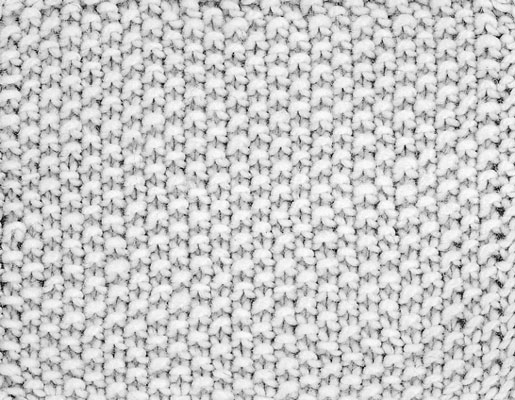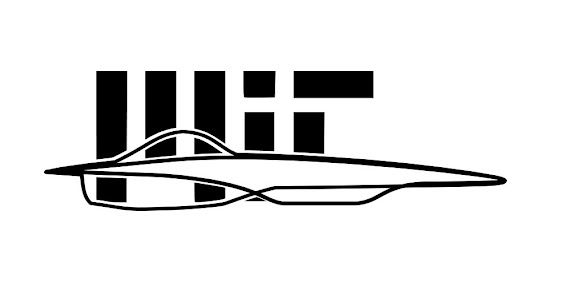pearls and extra thread 3D stiches
by rbatzer
knit pattern meanings
10 stitches across of each patter will be shown at minimum, more if needed for pattern
pattern spacing for readability
1 leave hook in knit position
0 pull hook all the way forward
> move stitch one to the right
< move stitch one to the left
….. continue pattern
x# number of times row is repeated
Seed Stitch Test:
seed pattern

The seed stitch was made by pulling a needle completely out and knitting to leave behind extra strings. The needle was then put back into the knit position to create a bunched stitch which looks raised on the knit side of the fabric.
Three extra string was the maximum the machine was able to knit over.
A similar look is easy to achieve with hand knitting by switching to pearl on the knit side, but the traditional pattern is a lot of work on the machine version. A hand knit seed stitch from knit/pearl is seen at right.
image: full patter from knit side, knit side close-up, pearl side close-up, hand knit seed (knit/pearl altering)
Extra thread 3D structures
Adding stitches to create bumps is usually done without extra threads being left behind by not knitting over areas in between stitches. In this pattern, the 3D structures were made in the middle of the pattern so that a thread is left after every stitch. Depending on the direction of pattern decrease, either a set of loose threads of a thick bunch of stitched threads will be left behind.
Knit side
pearl side
loose bunch
11111 11111 11111 11111
11111 00000 11111 00000
x number of threads per section
11111 11111 11111 11111
loose rainbow pattern
11111 ….11111
11111 11110 01111 11111
11111 11100 00111 11111
11111 11000 00011 11111
11111 10000 00001 11111
11111 00000 00000 11111
11111 11111 11111 11111
bunched thread pattern
11111 ….11111
11111 0000 …0000 11111 (leave unstitched desired size of bunch)
decrease number of unstitched threads each row until all are picked up as shown below
11111 1000 … 0001 11111
11111 1100 … 0011 11111
11111 1110 … 0111 11111
etc.
The maximum number of threads that can be picked up is around 10.
Two color variation on rainbow pattern
Using a second color for the rainbow pattern can create a nice effect, especially if the extra threads are stitched back into the pattern as seen below. This can be accomplished by simply laying the excess thread across the needles to be stitched.
Cone
A variation on the assigned pattern to create a non-uniform cone. At the end of the pattern, the first stitches are added to the needs and knit together with the end of the pattern to bind them together.
seam pattern
11111 … 11111
01111 … 11111
00111 … 11111
00011 … 11111
continue until desired seam length is reached and reverse pattern until all are knit
00000 … 00001
00000 … 00011
00000 … 00111
…
11111 … 111111
cone pattern
30 stitches
seam of length 5
seam of length 15
seam of length 25
knit cast-on back to current stitch
cast off
Water Droplet
30 stitches wide
11111 … 11111 x2
01111 … 11110 x2
00111 … 11100 x2
…
… 001100 … x2
11111 … 11111 x25
11111…11<>11…11111
11111 … 11111 x10
Two color knit on the fine gauge machine
I wanted to try out the computer controlled knitting available in the lab and decided to make an MIT Solar Car logo. I first made a test run with one of the designs on the machine to figure out what issues I would have.
test pattern

The solar car is 100×200 stitches